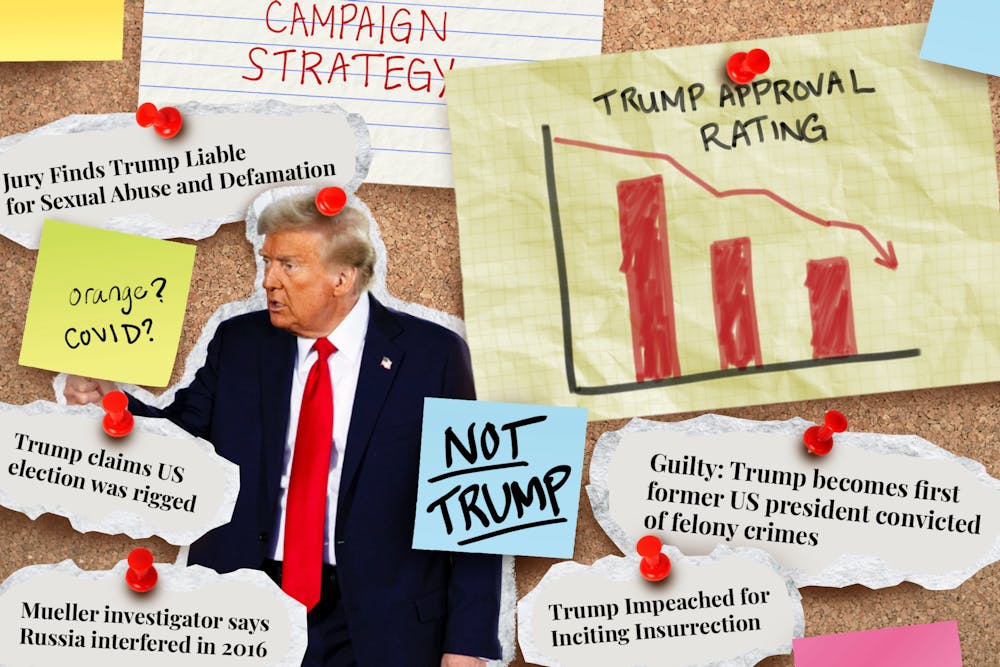This was always going to happen. Throughout the entire campaign, the Democratic Party and Vice President Kamala Harris ran unsuccessfully. For those who answered exit polls, the number one issue was the economy. For the Democrats, the number one issue was, and has been, now president-elect Donald Trump.
You cannot win a hundred-day campaign simply by promising who you are not, whether that be Trump or President Joe Biden. Consistently, Harris's campaign placed the vice president as nothing more than an alternative to Trump. Yes, Biden’s 2020 campaign was weak and centralized being anti-Trump. But that was when Trump was the president and COVID-19 was affecting the entire nation. Since 2016, people had been sick of Trump and that notion was shown by record voter turnout, with Biden gathering 81 million across the nation. On Nov. 7, the tally was 68 million for Harris, a drop-off of 13 million voters in the course of four years. Trump had almost 73 million votes, only 1 million less than he amassed in 2020.
The totals haven’t shifted for Trump, but for the Democratic Party they’ve shifted significantly. It’s been a long time coming. In the past three elections, the party has failed to nominate their strongest option (a simple map of 2020 donations to Democratic candidates reveals overwhelming support for Bernie Sanders, a progressive candidate essentially shut out by party leadership). This is a sharp contrast from 2008 and 2012 when Barack Obama platformed an inspiring vision for the country and had the oratory powers to communicate that.
In 2016, Hillary Clinton presented as an out-of-touch candidate which, coupled with her long political career, created a situation in which an incredibly polarizing outsider could win. The nation was shocked. It should have signaled that the Democrats needed to change tactics and reassess their voters.
In 2020, the then 77-year-old Biden rode Trump’s abject failure and a variety of problems raised by COVID to the White House. Like Clinton and Harris, he is a moderate career politician, but his role as vice president to the highly-regarded Obama helped. Unfortunately, COVID continued to create problems, raising inflation to incredible highs as Biden attempted to steer the nation out of the pandemic. Still, the Democrats did not choose one of their stronger candidates.
To win an election, you must win the voters, and Harris did not do that. In 2016, 2020 and 2024, the Democratic Party put up less-popular centrist candidates. With most of the same advisors that served Biden, explicit ties to his leadership and unfortunate campaign circumstances Harris was essentially deposited in a readymade losing position.
Of course, she was a better candidate than Biden would have been. But instead of maximizing her situation, focusing on how she would govern and what policies she supports, again the Democratic candidate's biggest message was "Trump bad," echoing the cardinal message we have been hearing from her party for years.
But we’ve known this. The American left has known that Trump is bad; and for almost a decade that angle hasn’t been enough, no matter how much the Democrats have pushed it.
This is made worse by the fact that, while the Democrats have long counted minorities and women among their ranks, they did not do enough to retain them. Racial minorities, particularly Latinos, mobilized for Trump in record numbers, and the promise of abortion protections — which has been held over Americans’ heads like a carrot on a stick — did not pull enough white women to tip the balance. The economy, which mattered most to men, was not nearly important enough in their campaign. Change, for better or worse, is tantalizing. Harris and the Democrats didn’t promise enough for those in need.




